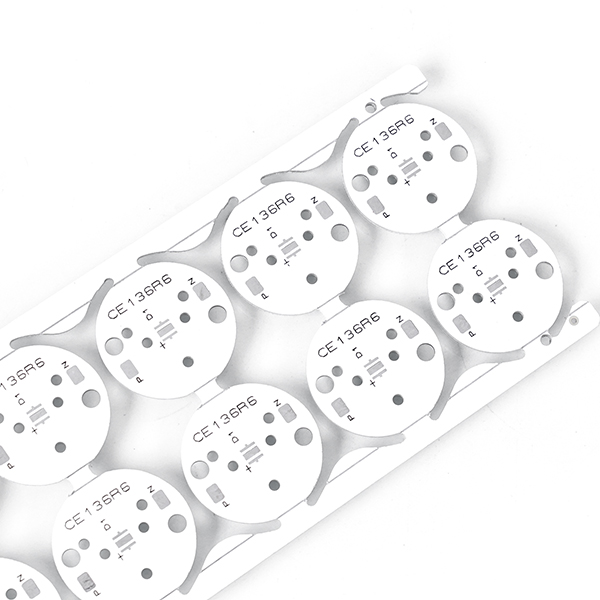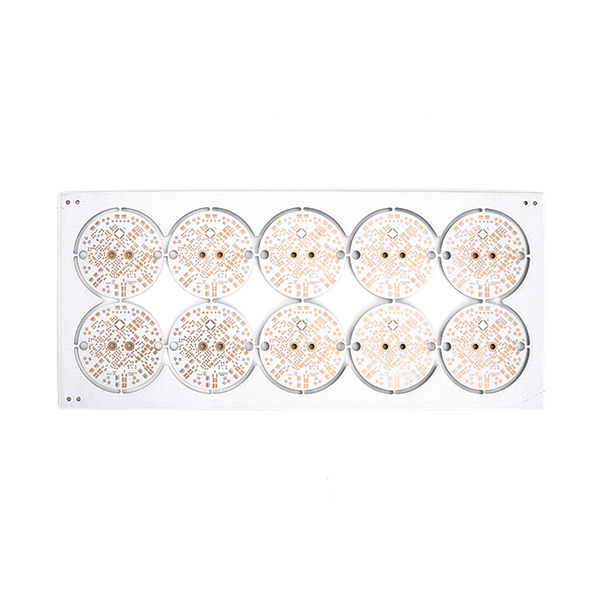How To Choose Different Aluminum Base for Your Products
- Views
- 02 Apr 2024
In this modern technology era, where efficiency and performance are paramount, the utilization of aluminum substrates has become synonymous with excellence, particularly in applications requiring effective heat dissipation such as LED products. Renowned for their exceptional thermal conductivity and high-pressure resistance, aluminum substrates have firmly established themselves as the frontrunners in the domain of thermal management solutions. But what exactly propels these materials to such preeminence, and how do different compositions fare in various scenarios? Join us, let’s together to explore an enlightening journey through the intricate world of aluminum substrates.
Generally speaking, customers share the production parameters of their board, and we will choose the proper base material based on their requirements and using environment. Currently, two primary types dominate the market: pure aluminum and aluminum alloys. But what sets these materials apart, and how are they categorized? Let's delve deeper into these aspects.

Unveiling the Distinctive Attributes:
Thermal Conductivity:
Pure Aluminum (1xxx Series): Renowned for its exceptional thermal conductivity, pure aluminum stands as a prime choice for applications demanding superior heat transfer efficiency.
Conversely, aluminum alloys, while slightly trailing pure aluminum in thermal conductivity, offer versatility by incorporating alloying elements such as silicon or magnesium. However, it's noteworthy that the thermal conductivity of aluminum alloys can vary depending on the specific alloy composition. Generally, higher proportions of elements like silicon or magnesium in aluminum alloys may marginally reduce their thermal conductivity.
Strength and Hardness:
The interplay between strength and hardness delineates the performance disparities between pure aluminum and aluminum alloys.
Pure aluminum, characterized by its malleability, exhibits relatively lower strength and hardness compared to its alloy counterparts, so it would be chosen when the working environment is not so tough or the customers want to keep the soft part in their boards.
Aluminum alloys, on the other hand, boast a spectrum of mechanical properties, ranging from moderate to high strength and hardness, contingent upon the alloy series and elemental compositions. This versatility renders aluminum alloys indispensable in diverse applications, catering to a myriad of structural requirements.
Corrosion Resistance:
Corrosion resistance emerges as a pivotal consideration, particularly in environments prone to chemical degradation.
Pure aluminum demonstrates commendable corrosion resistance, albeit being outshone by certain aluminum alloys equipped with corrosion-resistant elements like magnesium.
The nuanced variations in corrosion resistance across different aluminum alloy series enable targeted solutions tailored to specific environmental challenges.
Machinability:
Ease of fabrication is another hallmark feature of aluminum substrates, facilitating seamless integration into various manufacturing processes.
Pure aluminum, renowned for its excellent machinability, offers effortless formability, enabling intricate designs and precise machining.
Aluminum alloys, although equally adept in machining, exhibit nuanced machinability influenced by alloy series and elemental compositions. Specialized alloys may present unique challenges or advantages, necessitating meticulous consideration during fabrication processes.
In summary, disparities among aluminum substrates lie in thermal conductivity, strength and hardness, corrosion resistance, and machinability. Given the nuanced differences in properties, selecting the appropriate aluminum substrate necessitates a comprehensive understanding of application requirements and performance criteria.

Having elucidated the fundamental properties of these materials, the question arises: Under what conditions do we opt for each base material?
For pure aluminum, prized for its stellar thermal conductivity and machinability, it finds favor in applications necessitating superior heat transfer, such as LED heat sinks and electronic device heat plates.
As for aluminum alloy series, their properties are tailored through the addition of alloying elements. Different series cater to diverse needs:
For example,
1xxx series: These aluminum alloys are mainly composed of pure aluminum, typically with high purity. Since no other alloying elements are added, these alloys exhibit excellent thermal conductivity and good corrosion resistance. A typical example is the 1100 aluminum alloy, commonly used in applications requiring high thermal conductivity, such as radiators and kitchen utensils.
3xxx series: These alloys contain aluminum and manganese, among other elements. The addition of manganese can increase the strength and hardness of the alloy while maintaining good workability. The 3003 aluminum alloy is a typical alloy in the 3xxx series, commonly used in the manufacture of products such as containers and automotive parts that require good formability and weldability.
5xxx series: These alloys contain aluminum and magnesium, among other elements. The addition of magnesium enables these alloys to have good corrosion resistance and weldability. The 5052 aluminum alloy is a common alloy in the 5xxx series, suitable for manufacturing parts for marine environments, tanks, hulls, etc.
6xxx series: These alloys contain aluminum, magnesium, and silicon, among other elements. These alloys exhibit good workability, strength, and corrosion resistance. The 6061 aluminum alloy is a common alloy in the 6xxx series, used in the manufacturing of aerospace components, bicycle frames, ship structures, etc.
7xxx series: These alloys contain aluminum and zinc, among other elements. The addition of zinc can increase the strength and hardness of the alloy but may reduce its workability. The 7075 aluminum alloy is a common alloy in the 7xxx series, used in the manufacturing of aerospace components, high-strength parts, etc
In conclusion, the selection of aluminum substrates hinges on a nuanced understanding of application requirements and material properties. At BEST, we pride ourselves on our ability to seamlessly align client needs with optimal material solutions, ensuring a harmonious blend of performance and functionality. Rest assured, entrust us with your requirements, and we'll craft a tailored solution that exceeds expectations.
Aluminum Base, aluminum substrates,
Related Blog
- What is Thermal and Electrical Separating Pad in Metal Core PCB?
- LED PCB Assembly Process: Step-by-Step Guide for Beginners
- Why Always Recommend White Solder Mask Black Silkscreen for Aluminum PCB?
- What Materials Are Commonly Used for Manufacturing Lighting PCBs?
- Everything You Should Know About Metal Core Circuit Board
- What Are the Differences Between Ceramic PCB, Metal Core PCB And Standard FR4 PCB?
- Why Choose Best Technology As Your MCPCB Manufacturer?
- What is LED Light Circuit Board and How to Make it?
- When is International Labour Day in 2024 and What are the Significances of It?
- How Does A Convexity Comes Out On Thermoelectric Separation Copper Based PCB?
- Why is Aluminum LED PCB Important for Indoor Growth Lights?
- Application of Metal Core Pcbs in the Development of LED Technology
- Why Choose White Solder Mask for Metal core PCB When Used In LED Devices?
- Understanding Aluminum LED PCBs in 1000w LED Grow Lights
- What Are the Advantages of Metal Core PCB? How to Choose?
- Automotive Light Copper Core Pcb Production Process—testing
- Why Are Metal Core PCBs, Especially Copper Core, Used In Heat-Sensitive Electronics?
- How do aluminum LED PCBs improve LED efficiency?
- What Are the Differences Between Regular and Thermoelectric Separation Copper-Base PCBs?
- Aluminum PCB VS FR-4 Performance Comparison



